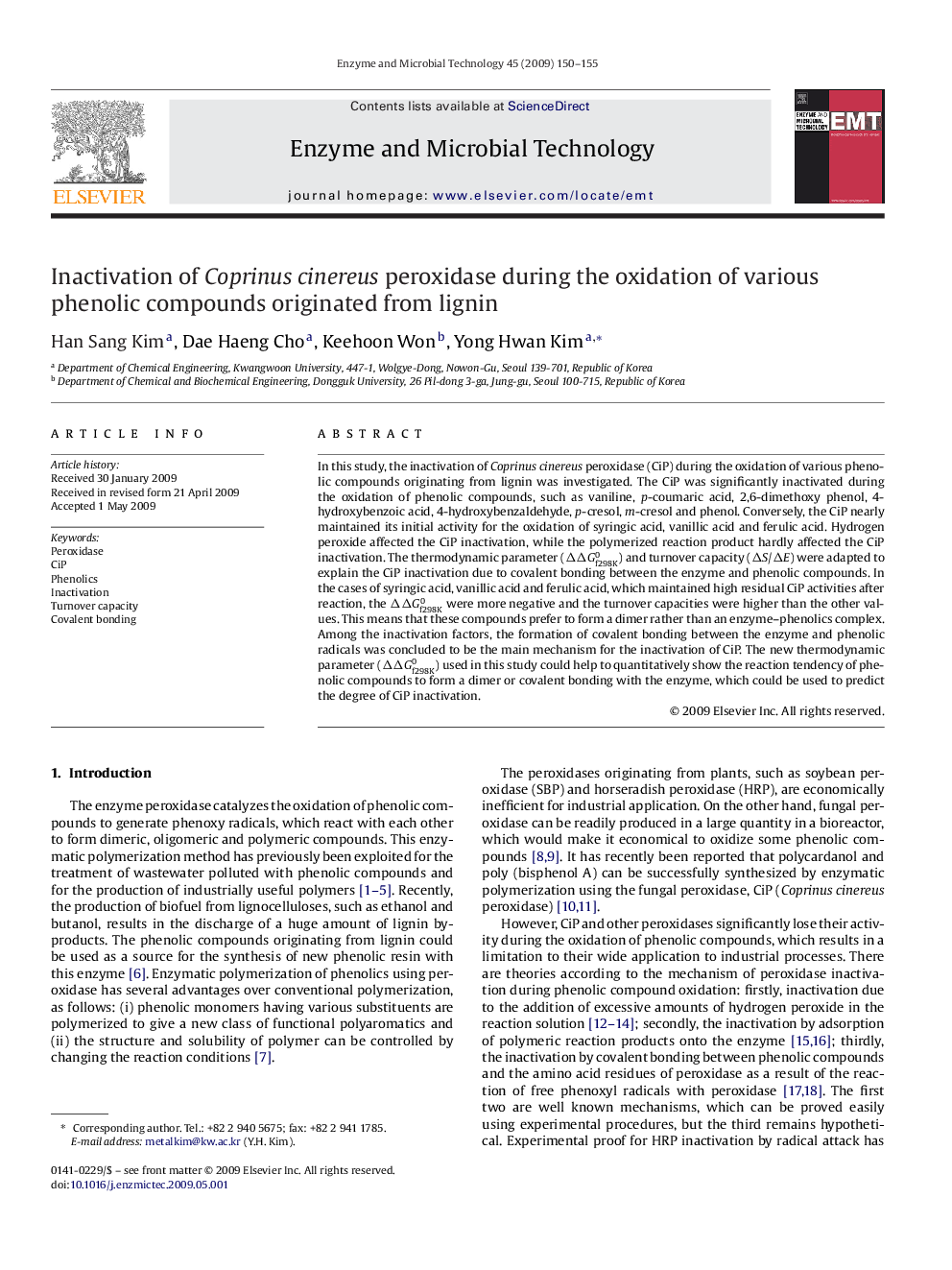| کد مقاله | کد نشریه | سال انتشار | مقاله انگلیسی | نسخه تمام متن |
|---|---|---|---|---|
| 17872 | 42702 | 2009 | 6 صفحه PDF | دانلود رایگان |

In this study, the inactivation of Coprinus cinereus peroxidase (CiP) during the oxidation of various phenolic compounds originating from lignin was investigated. The CiP was significantly inactivated during the oxidation of phenolic compounds, such as vaniline, p-coumaric acid, 2,6-dimethoxy phenol, 4-hydroxybenzoic acid, 4-hydroxybenzaldehyde, p-cresol, m -cresol and phenol. Conversely, the CiP nearly maintained its initial activity for the oxidation of syringic acid, vanillic acid and ferulic acid. Hydrogen peroxide affected the CiP inactivation, while the polymerized reaction product hardly affected the CiP inactivation. The thermodynamic parameter (ΔΔGf298K0) and turnover capacity (ΔS/ΔE ) were adapted to explain the CiP inactivation due to covalent bonding between the enzyme and phenolic compounds. In the cases of syringic acid, vanillic acid and ferulic acid, which maintained high residual CiP activities after reaction, the ΔΔGf298K0 were more negative and the turnover capacities were higher than the other values. This means that these compounds prefer to form a dimer rather than an enzyme–phenolics complex. Among the inactivation factors, the formation of covalent bonding between the enzyme and phenolic radicals was concluded to be the main mechanism for the inactivation of CiP. The new thermodynamic parameter (ΔΔGf298K0) used in this study could help to quantitatively show the reaction tendency of phenolic compounds to form a dimer or covalent bonding with the enzyme, which could be used to predict the degree of CiP inactivation.
Journal: Enzyme and Microbial Technology - Volume 45, Issue 2, 7 August 2009, Pages 150–155